Come with me this time as I repair and review a beautiful Musical Fidelity AMS35i class A integrated amplifier.
Welcome back, everyone. I know this will make quite a few people happy – another article about many people’s favourite brand, Musical Fidelity. I’ll go one better, with the baby amplifier from arguably Musical Fidelity’s greatest product line of recent years, the Antony Michaelson Series.
Musical Fidelity calls it the AMS Series. That’s right, the Antony Michaelson Series, Series. Hmm. Anyway, this one is the Musical Fidelity AMS35i, a pure class A integrated amplifier of considerable heft.
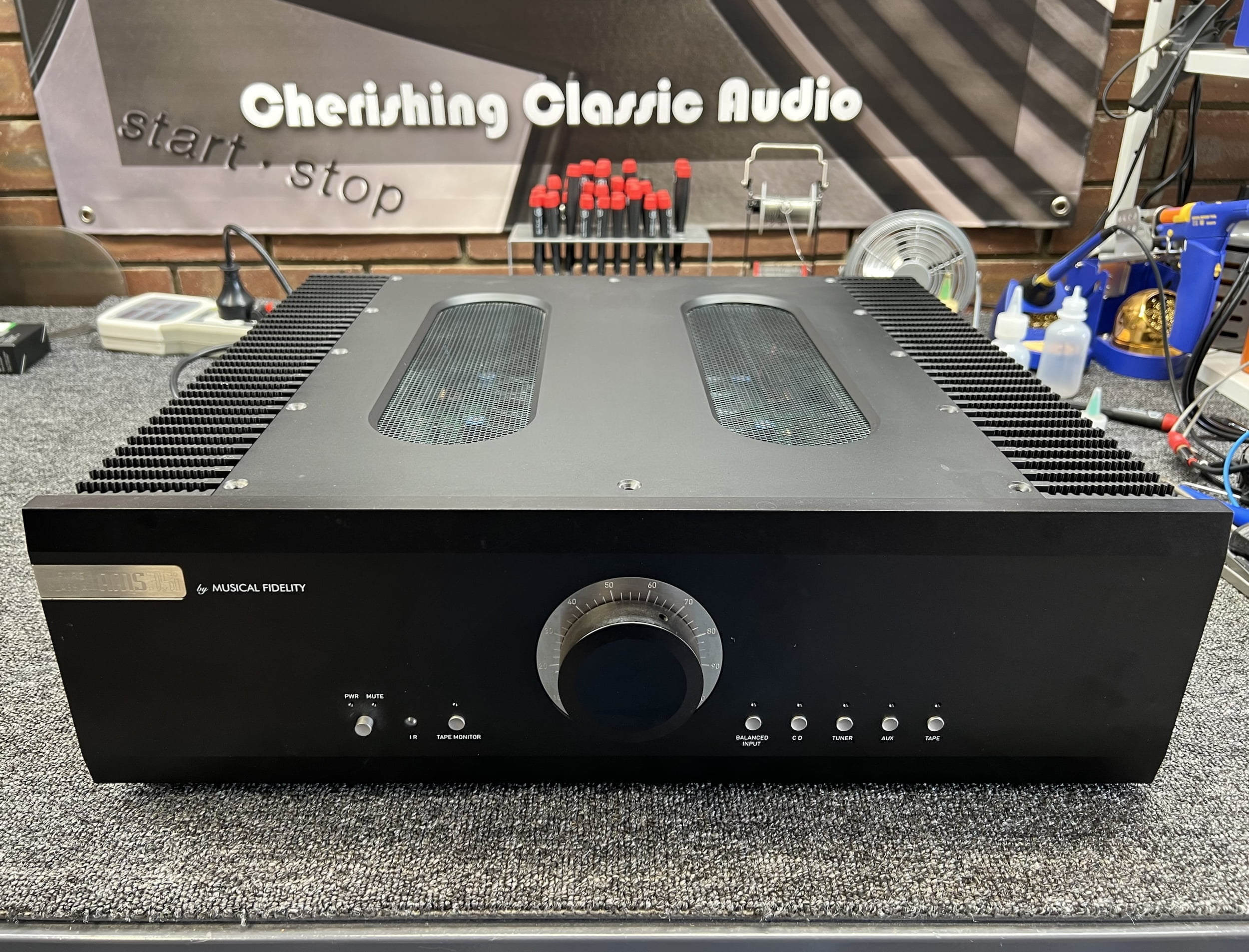
I don’t think it’s a secret that MF is a guilty pleasure of mine too. There’s something about the styling, mechanical build quality and general performance of some of their gear that is almost mythical. Unfortunately, there are some MF design issues and parts choices that are mythical for the wrong reasons and let down this otherwise lovely AMS35i.
First, though, have you seen the AMS50 or AMS100 amplifiers from the AMS series?! You need to, the AMS100 for example is a 100kg monster, surely one of the largest, heaviest class-A power amplifiers ever made, a true end-game amplifier.
Do any of my readers own one..? Have any of my readers owned or even heard one? Want me to look at it for you..?! Let me know in the comments below.
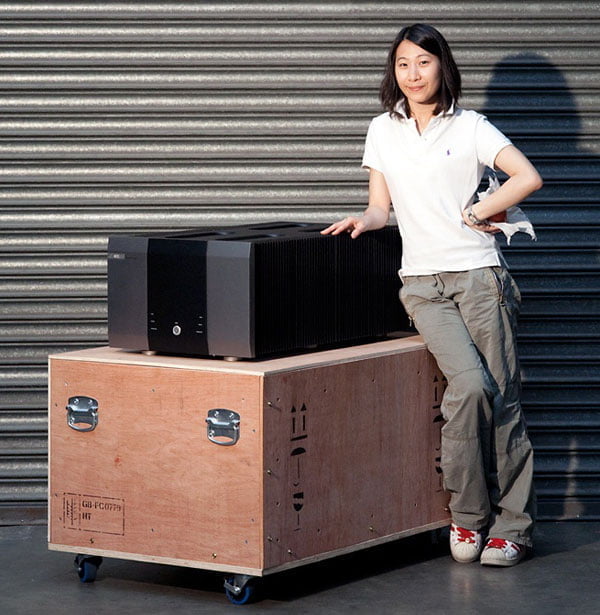
Musical Fidelity AMS35i Specifications
Courtesy of Musical Fidelity
Performance
- Power output: 35 Watts per channel into 8 Ohms (15.5 dBW)
- THD(+ noise): <0.014% typical
- Signal-to-Noise Ratio: >96dB
- Frequency Response: +0, –0.1dB, 10Hz to 20kHz
Inputs
- 4x RCA Phono Line Level
- 1x Line level XLR Balanced
General
- Dimensions – WxHxD (mm): 483 x 148 x 475
- Weight (unpacked/packed): 28.3 kg / 33 kg
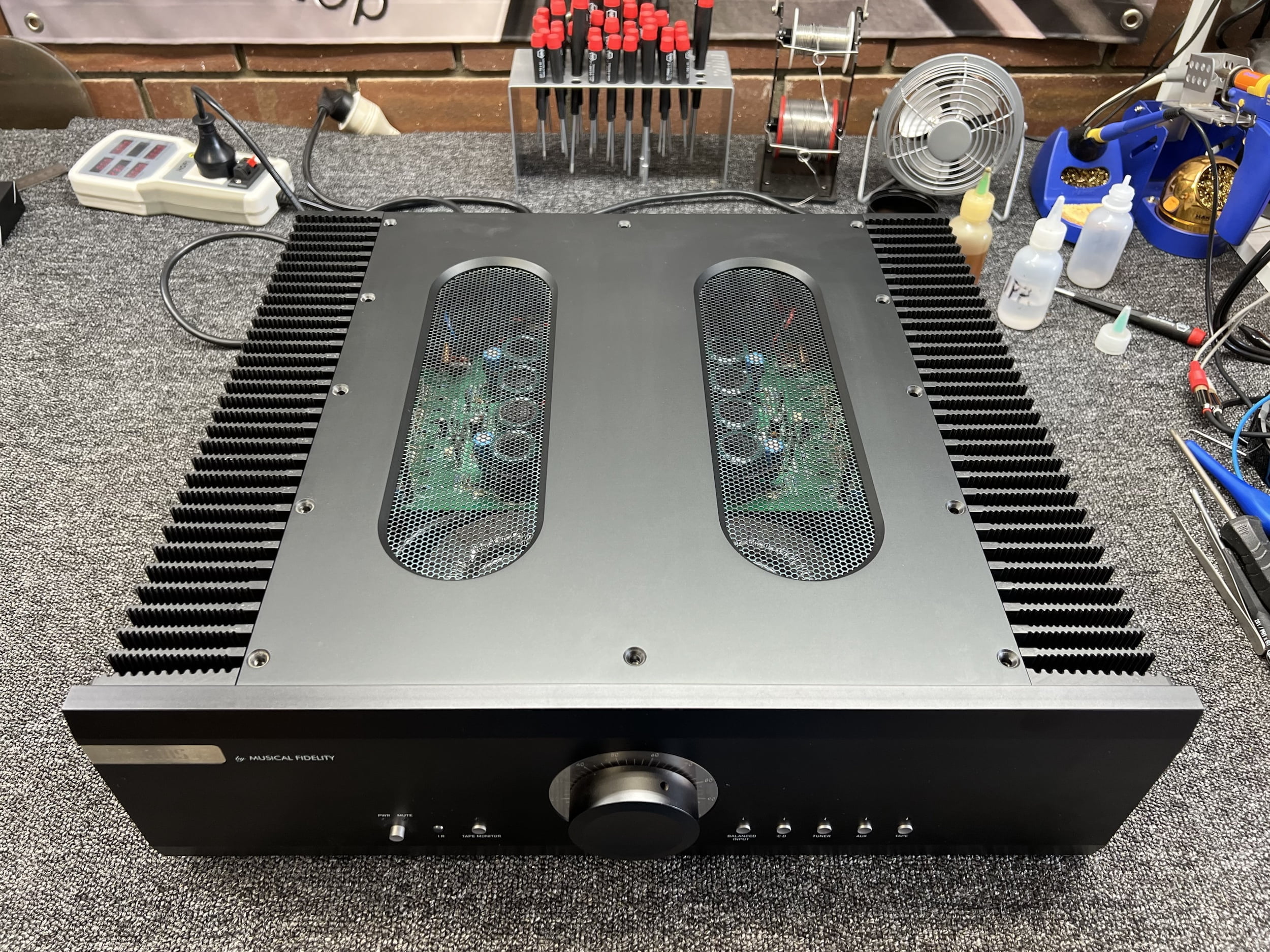
Features & Analysis
Perhaps most importantly, the AMS35i is a class A amplifier, meaning it operates at full power all of the time. The output stage draws full power and the heatsinks dissipate full power from the moment you turn it on, to the moment you turn it off.
Full power here means 310 Watts drawn from the wall, so you’ll need good ventilation and for the amplifier to be situated in free space. You’ll also need to turn it off when you are not listening to it. Remember – heat kills electronics.
The Musical Fidelity AMS35i is an integrated amplifier, so it has a built-in line-level preamplifier and multiple inputs. The preamp is basic, a simple op-amp circuit, so you’ll be better served by a good separate preamp, but this will get you by, with line-level sources. There’s one pair of balanced inputs, but the amplifier is not internally balanced end to end, so this input is mostly for show I’m afraid.

The output stage utilises the rather unfortunately named STD03 devices, another Sanken Darlington pair that Musical Fidelity just seems to love. The problem is, these Darlington pair devices are not the most robust devices being an integrated two-transistor package and finding and matching new ones, should it be needed, will be a big problem at some point. My tip – stock up on these devices if you have equipment that uses them.
The Musical Fidelity AMS35i is a dual mono design, meaning it is essentially two power amplifiers in one box. This is achieved with two transformers as we see above. Again though, and as Musical Fidelity does, there are a ton of Jamicon and cheap film caps here.
Is this really good enough in an amplifier that retailed for close to $10,000 AUD? No, it’s not. This example also exhibited some pretty ordinary circuit board kludges, as you’ll see if you watch the video:
Issues
This Musical Fidelity AMS35i had a couple of issues: It kept blowing fuses and the fuse holders and fuses were overheating. There’s a little to unpack here but basically, the amplifier is slightly under-designed in terms of the power supply, an effort to save money, but not a great plan.
The diode bridges are small and were inadequately torqued and thermally bonded to the chassis in this example. Additionally, the fuse holders are of poor quality and inadequately soldered into place using lead-free solder. The spring tension of the blades holding the fuses in place is low, leading to excessive contact resistance.
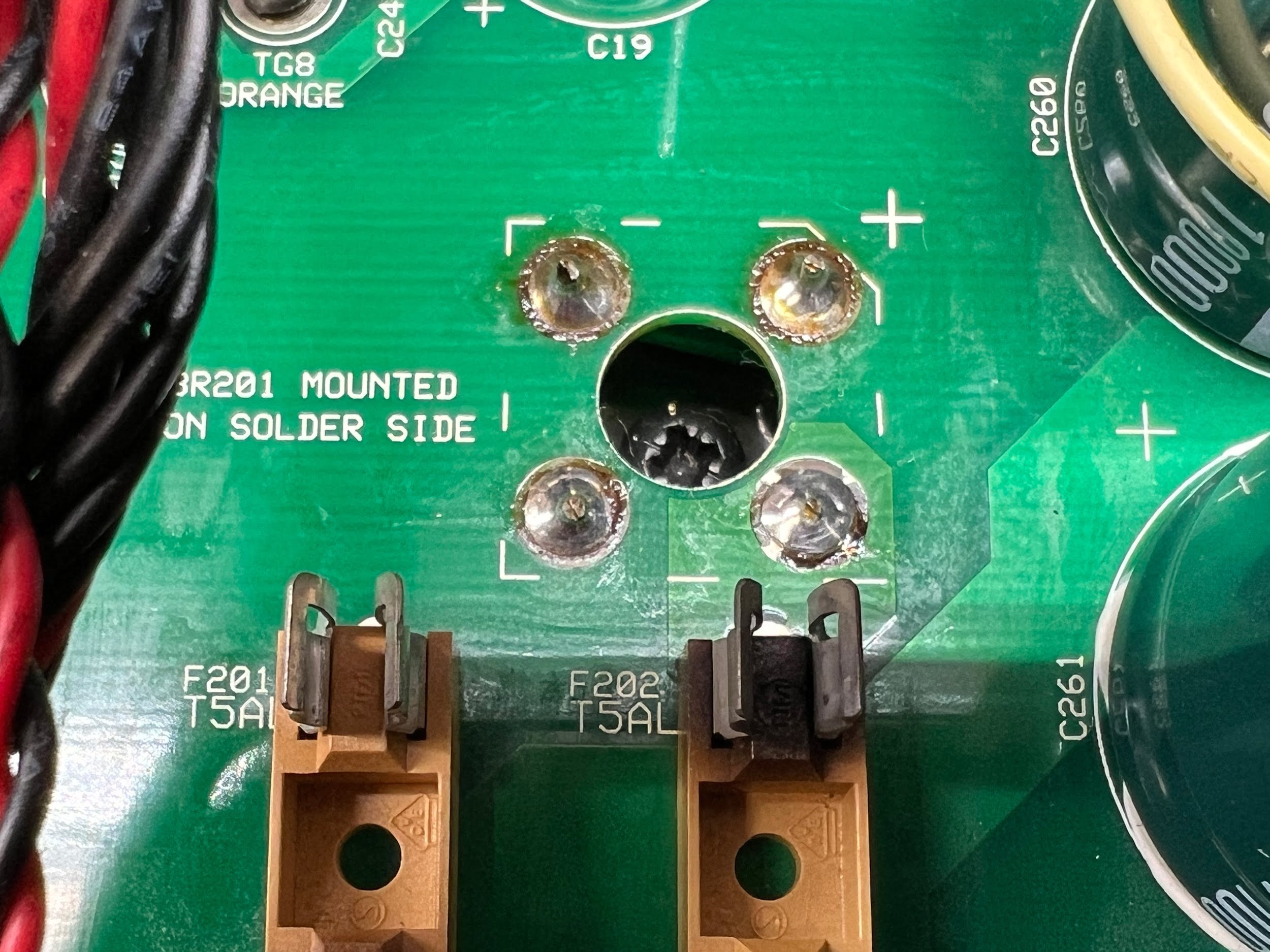
So there’s heat from the diode bridges, heat from the voltage drop across the fuses assemblies causing them to dissipate heat. Add lead-free solder into the mix which is a disaster really in terms of metallurgy and throw in a high-standing current draw from the class-A design and you have a recipe for the area to get hot.
Repair
This unit had been repaired previously, but the issues I’ve mentioned had not been addressed or resolved. Heavier fuses had been installed, but that’s not the solution. I decided needed to remove the entire board, a slight pain in the bum, and make some substantial improvements. That way I could minimise the chances of this happening again for the owner.
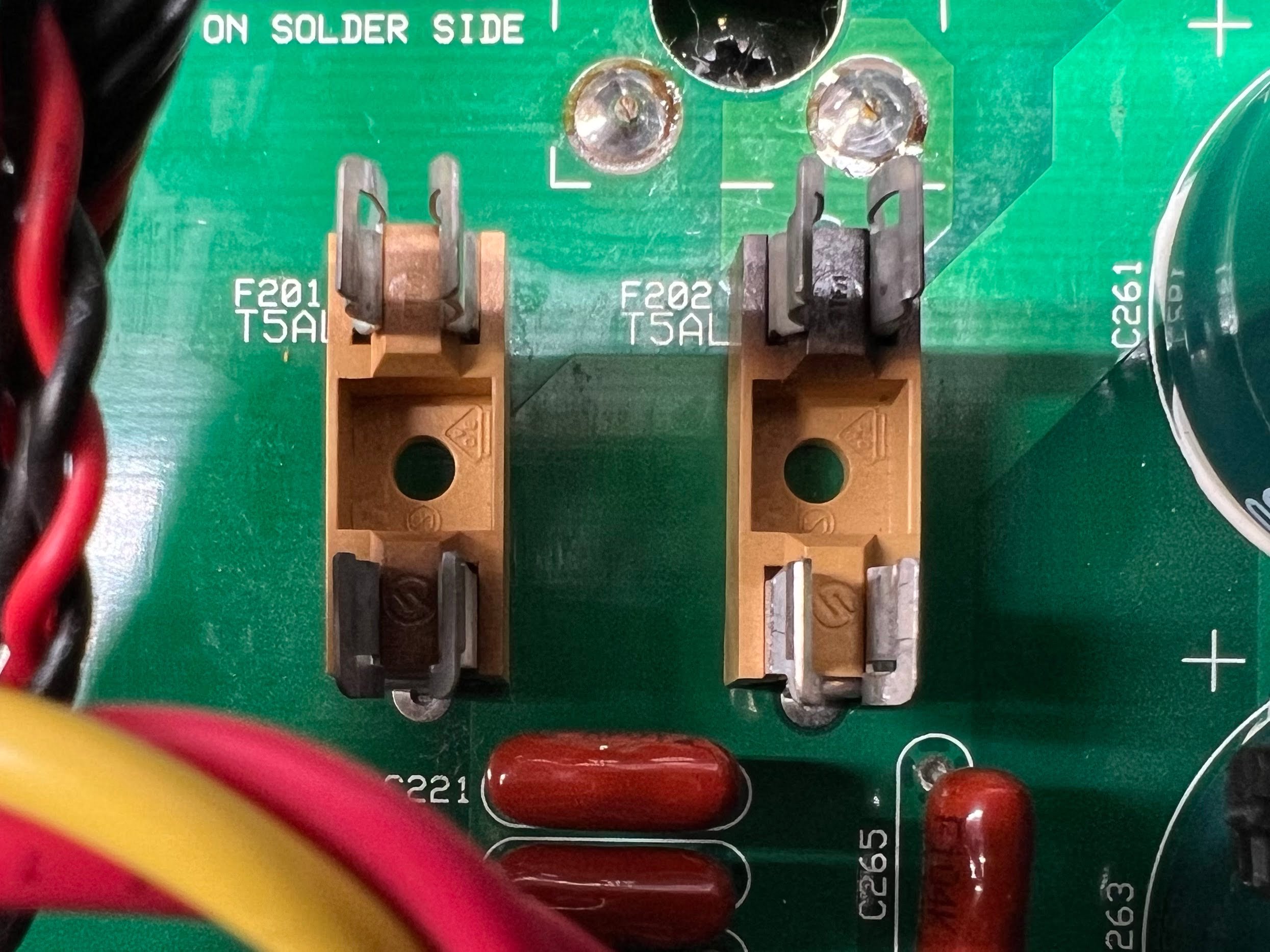
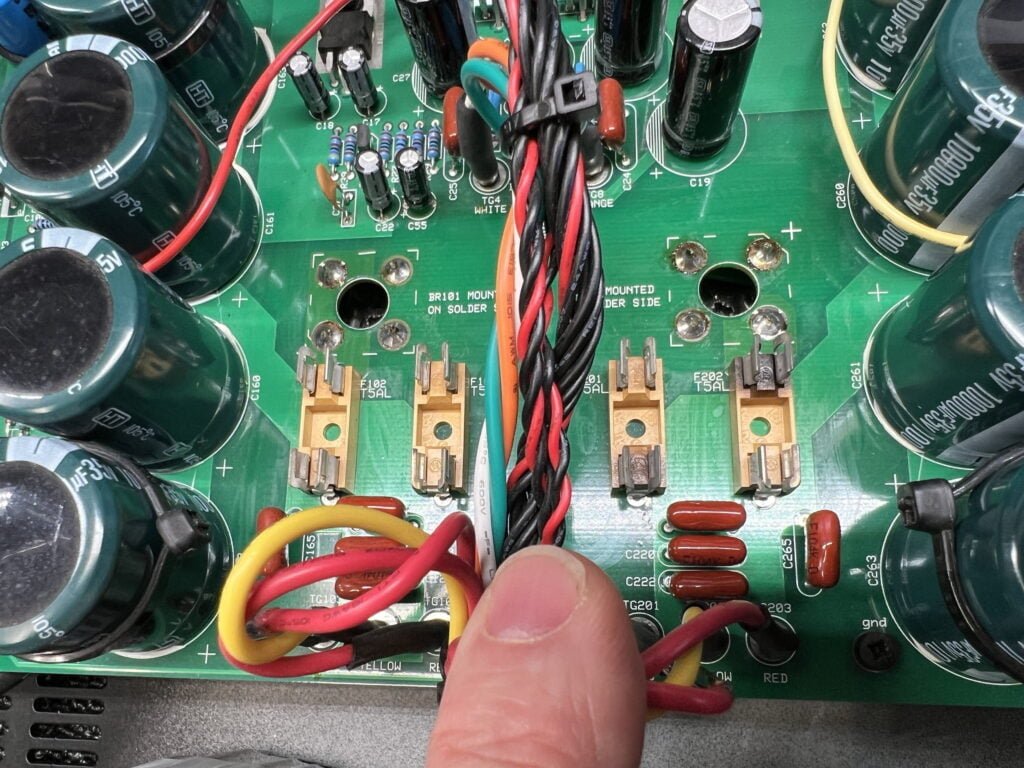
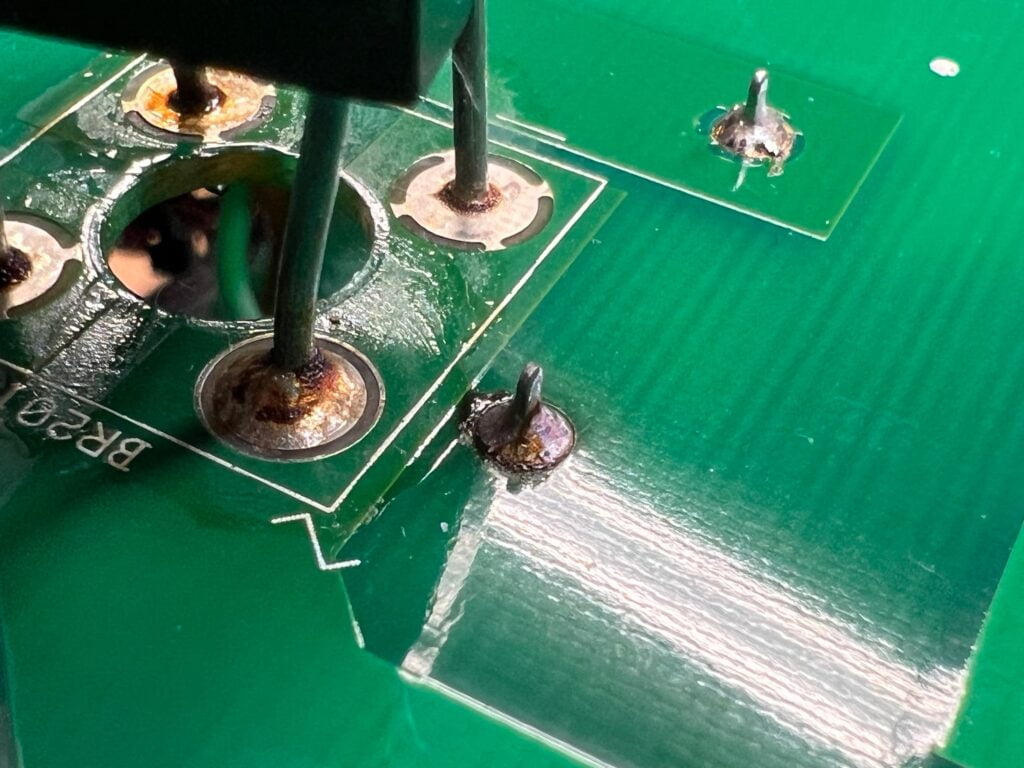
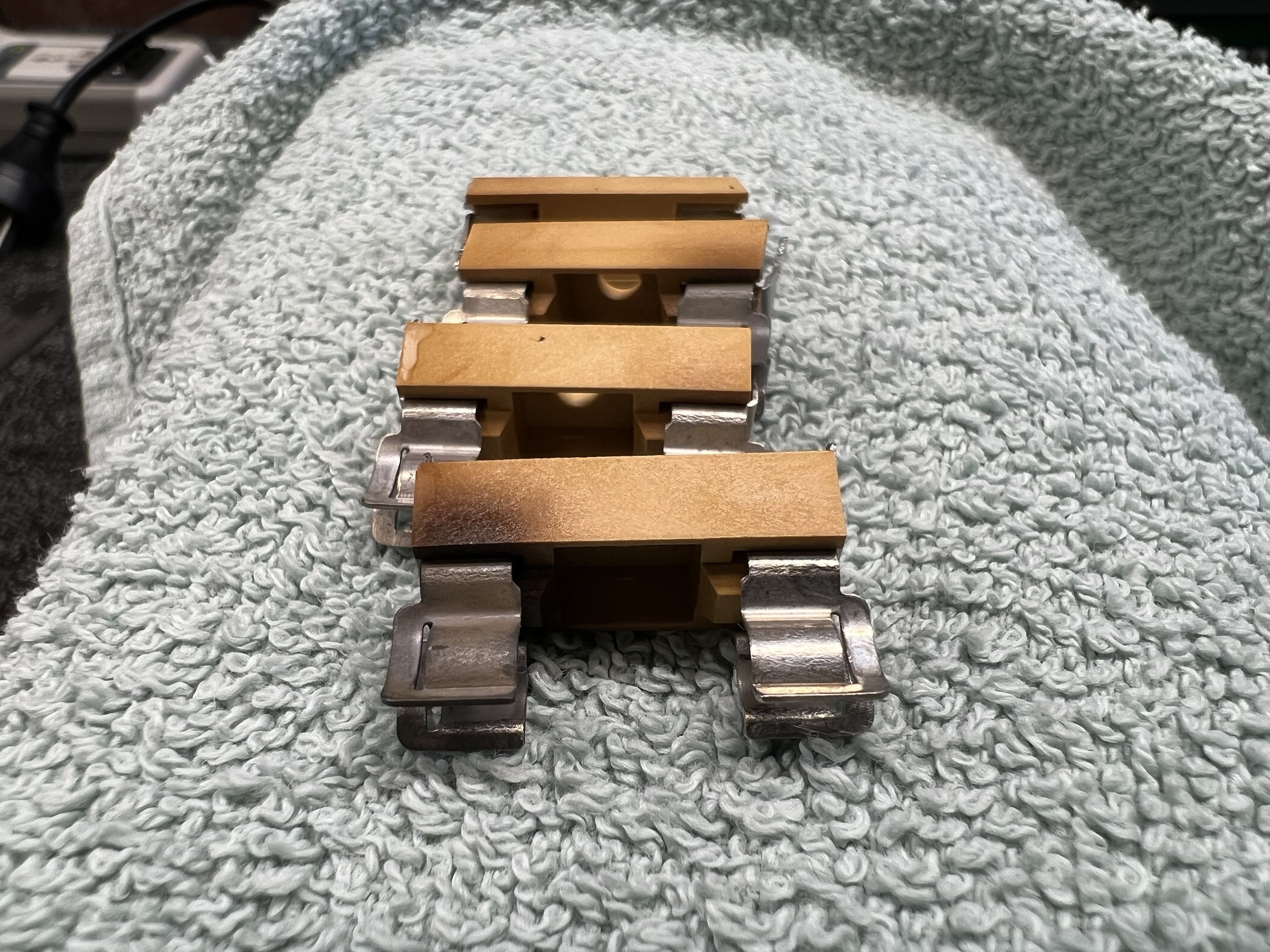
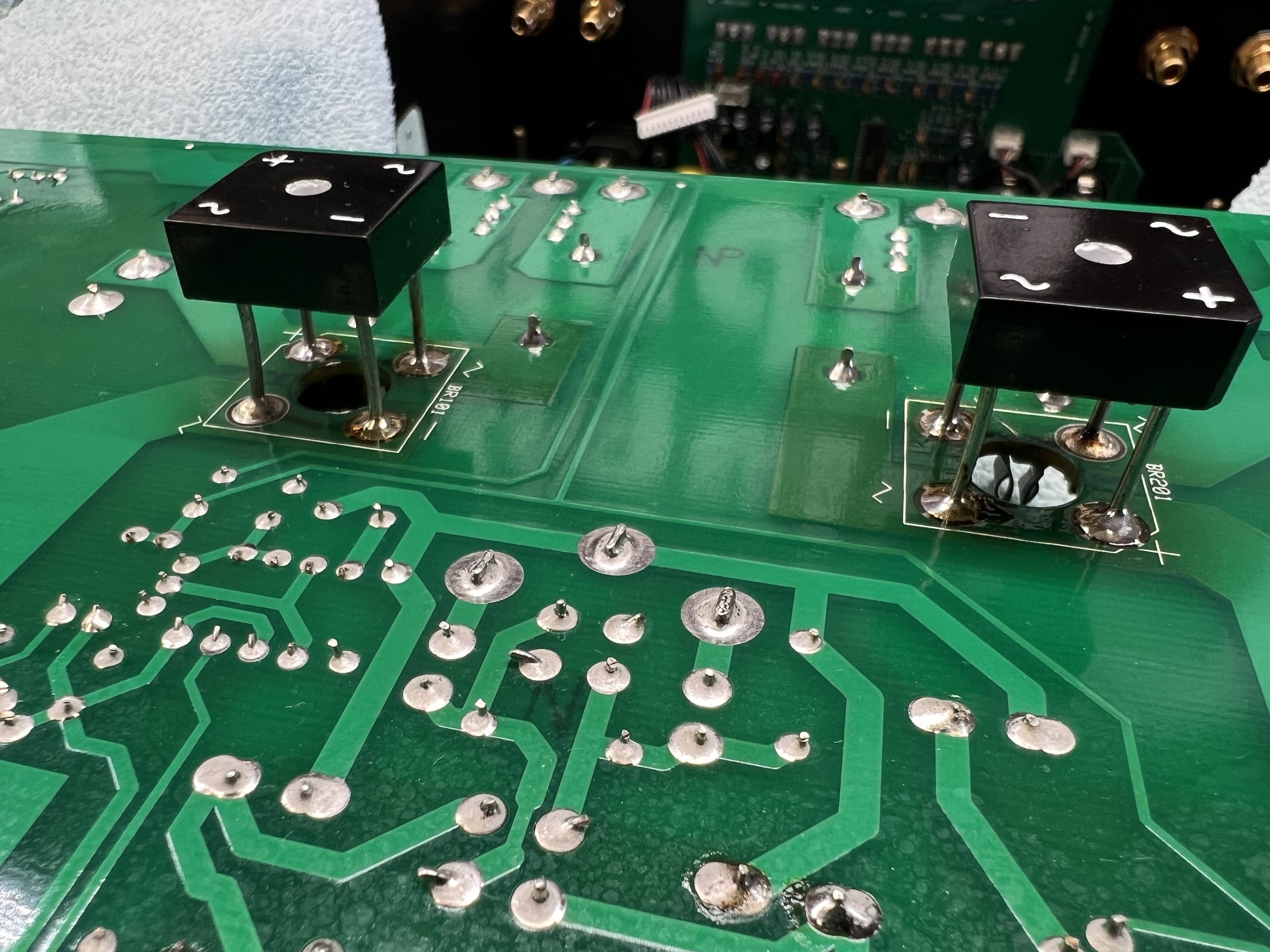
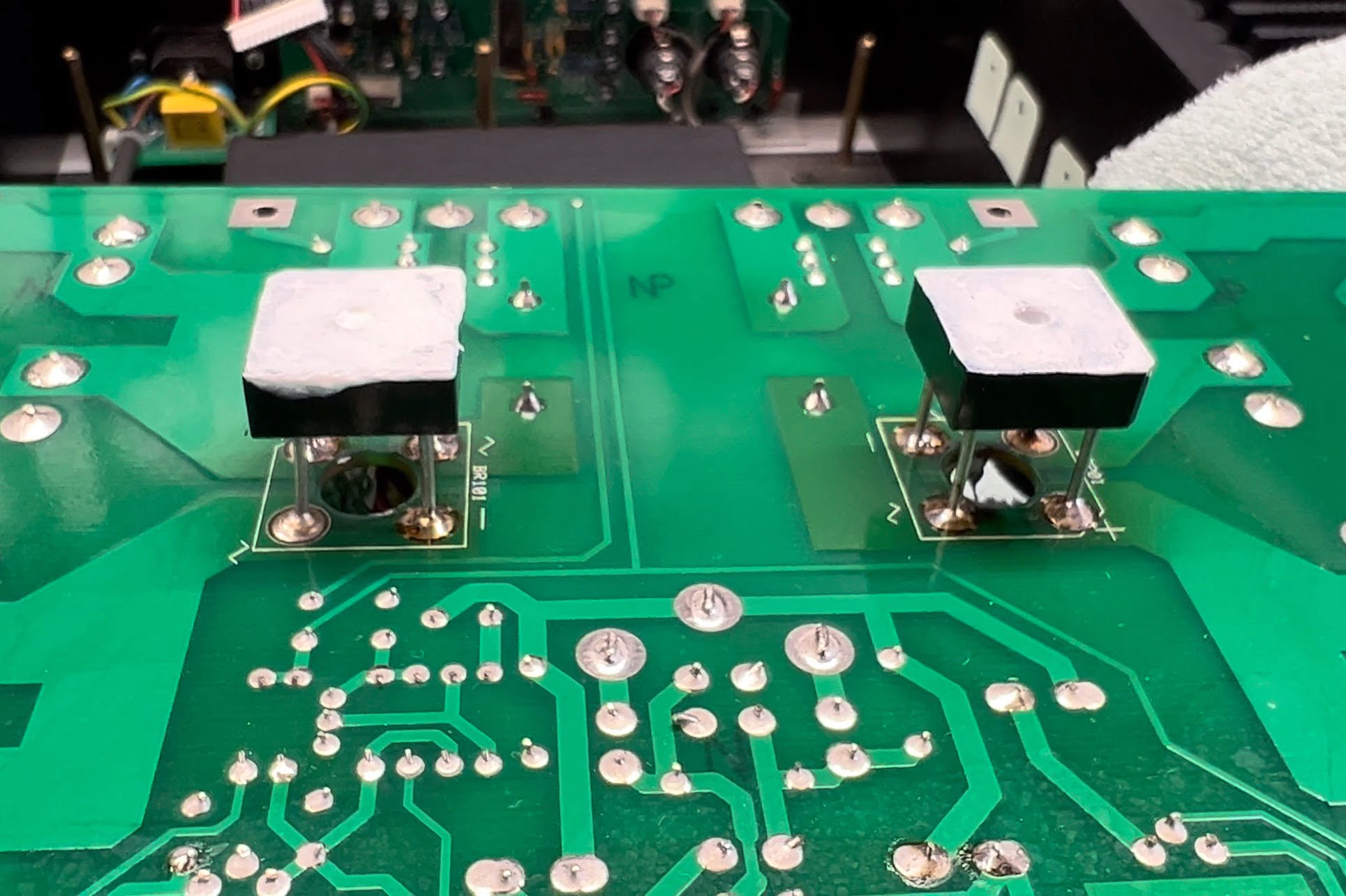
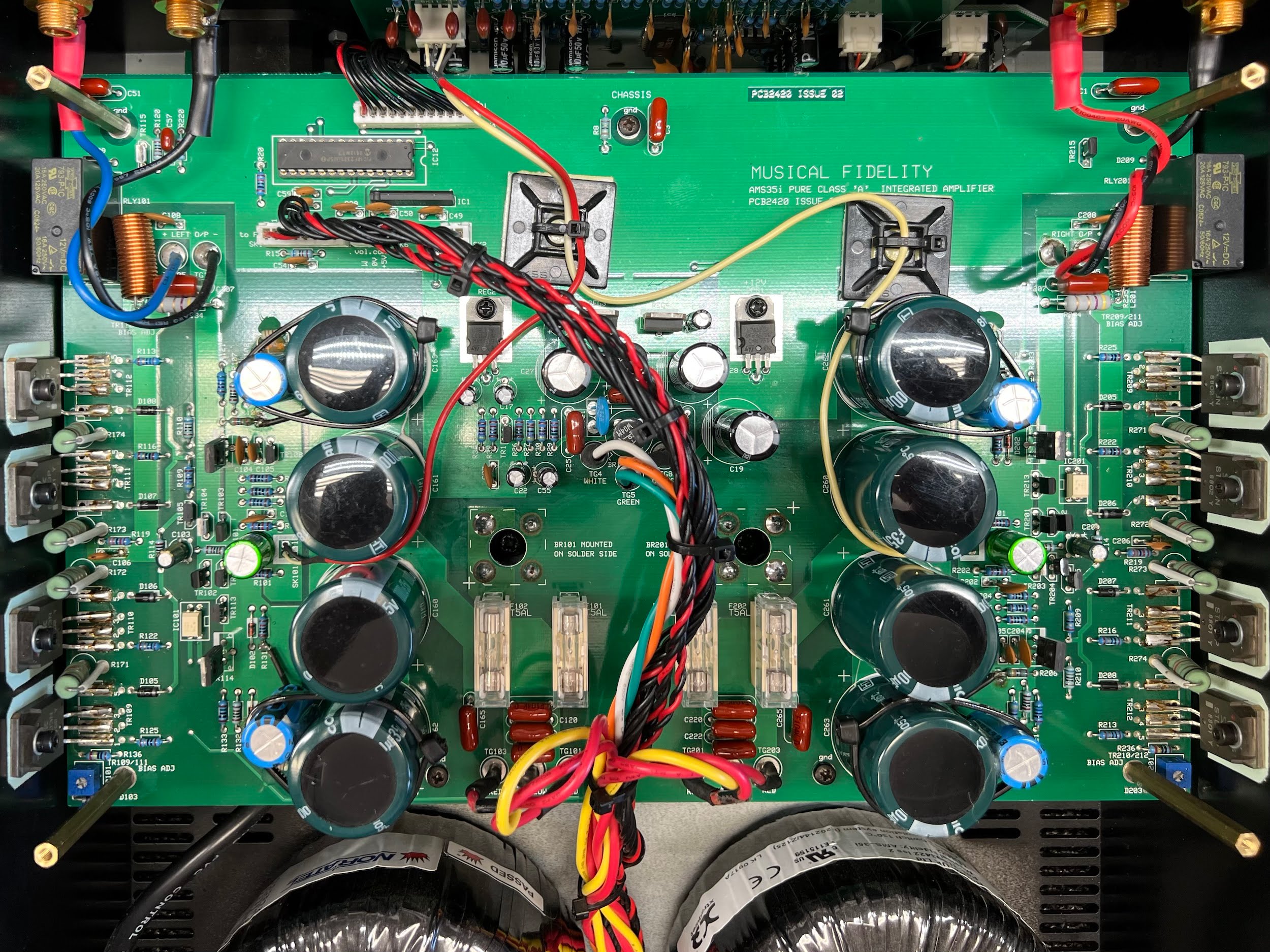
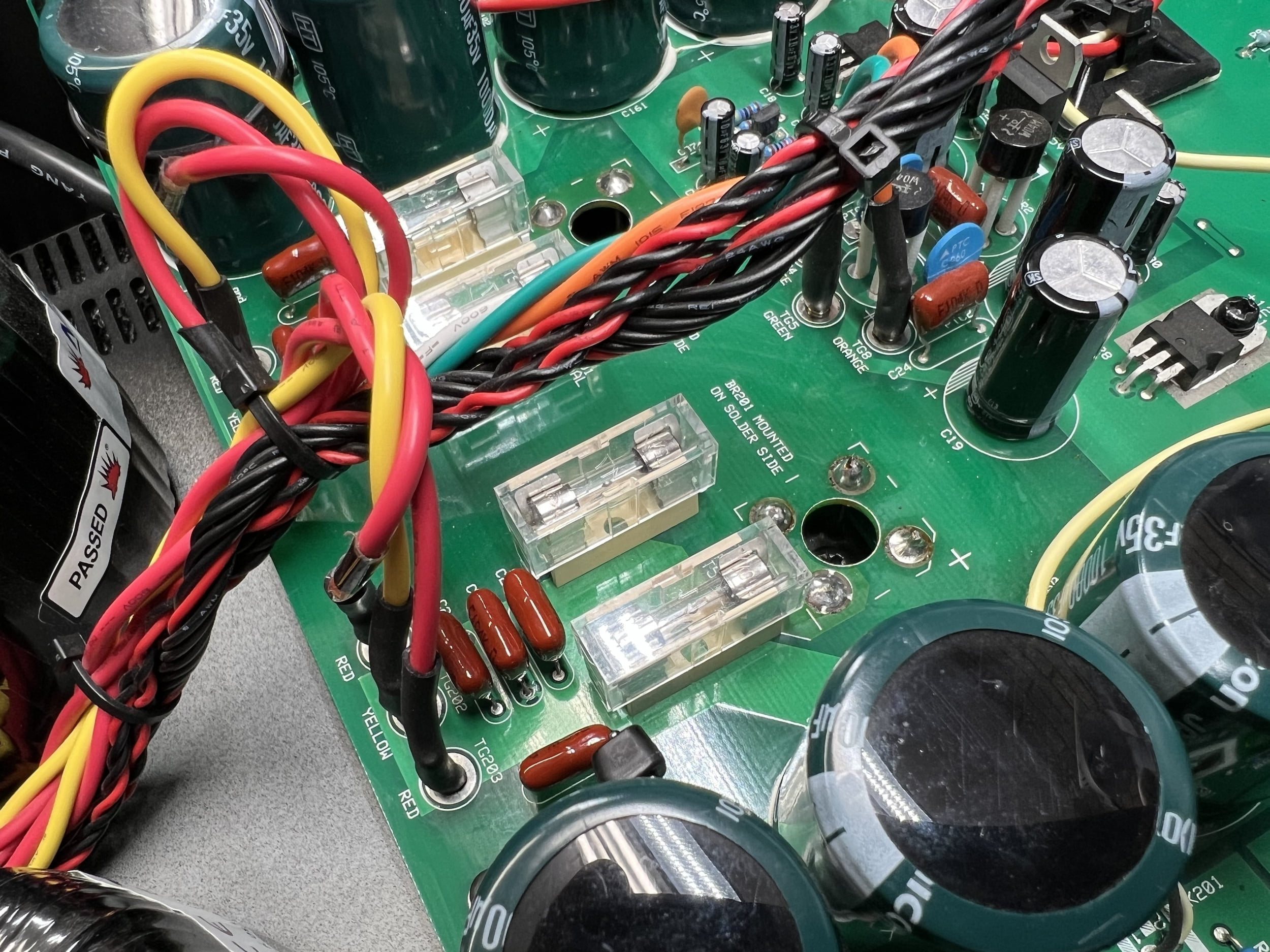

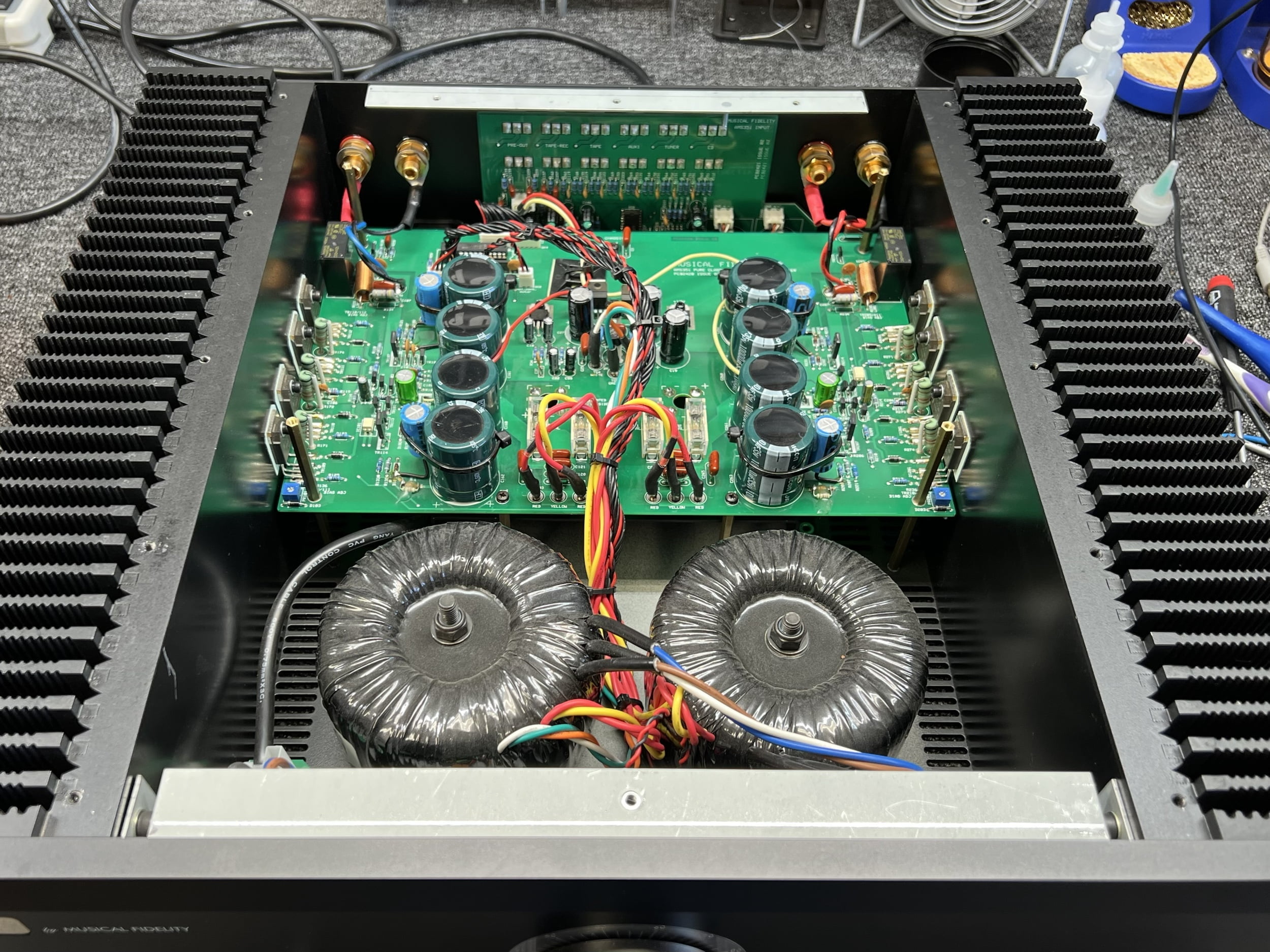
Results
After installing new fuse holders and fuses, reworking the affected areas of the board, improving the soldering, replacing a couple of caps and servicing her, this Musical Fidelity AMS35i ran beautifully once again, much to the relief of her lovely owner.

I think it’s fair to say that this is a good result and the right way to fix a problem such as this. In terms of further improvement, we could certainly replace all the cheap electrolytic capacitors in this amplifier. I would also install a few improvements of my own, which I know significantly improve performance.
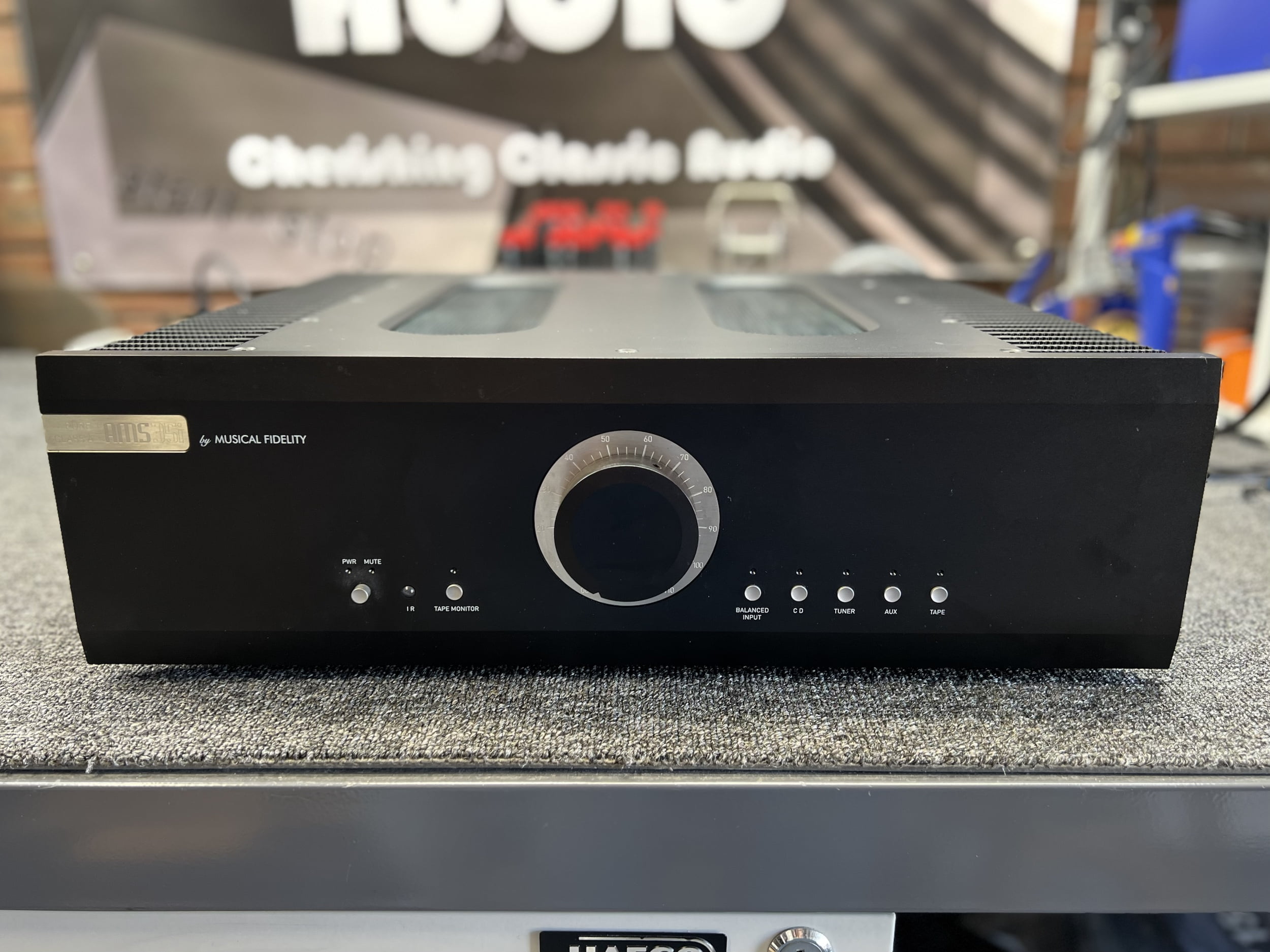
In terms of performance, I had a good listen to her in the shop, as I do all equipment that comes in for work, and the Musical Fidelity AMS35i sounded really lovely, in a smaller, more beautiful way than say a beefier power amplifier might.
The AMS35i sounds warm, clean, punchy and rhythmic, certainly possessing plenty of drive for most regular speakers. You also get what you can only get with lots of class A power and my business name points to this if you’ve ever wondered – that certain liquid sonic quality that only comes with class A equipment.
This amplifier would be well suited to someone with efficient speakers, in a smaller room, wanting excellent performance. I’d suggest investing a little bit in overhauling and improving an amplifier like this AMS35i because the bones are there as you can see. She just needs a little fettling to bring out the best in her, like so much Musical Fidelity equipment does. Maybe I’m just fussy..!
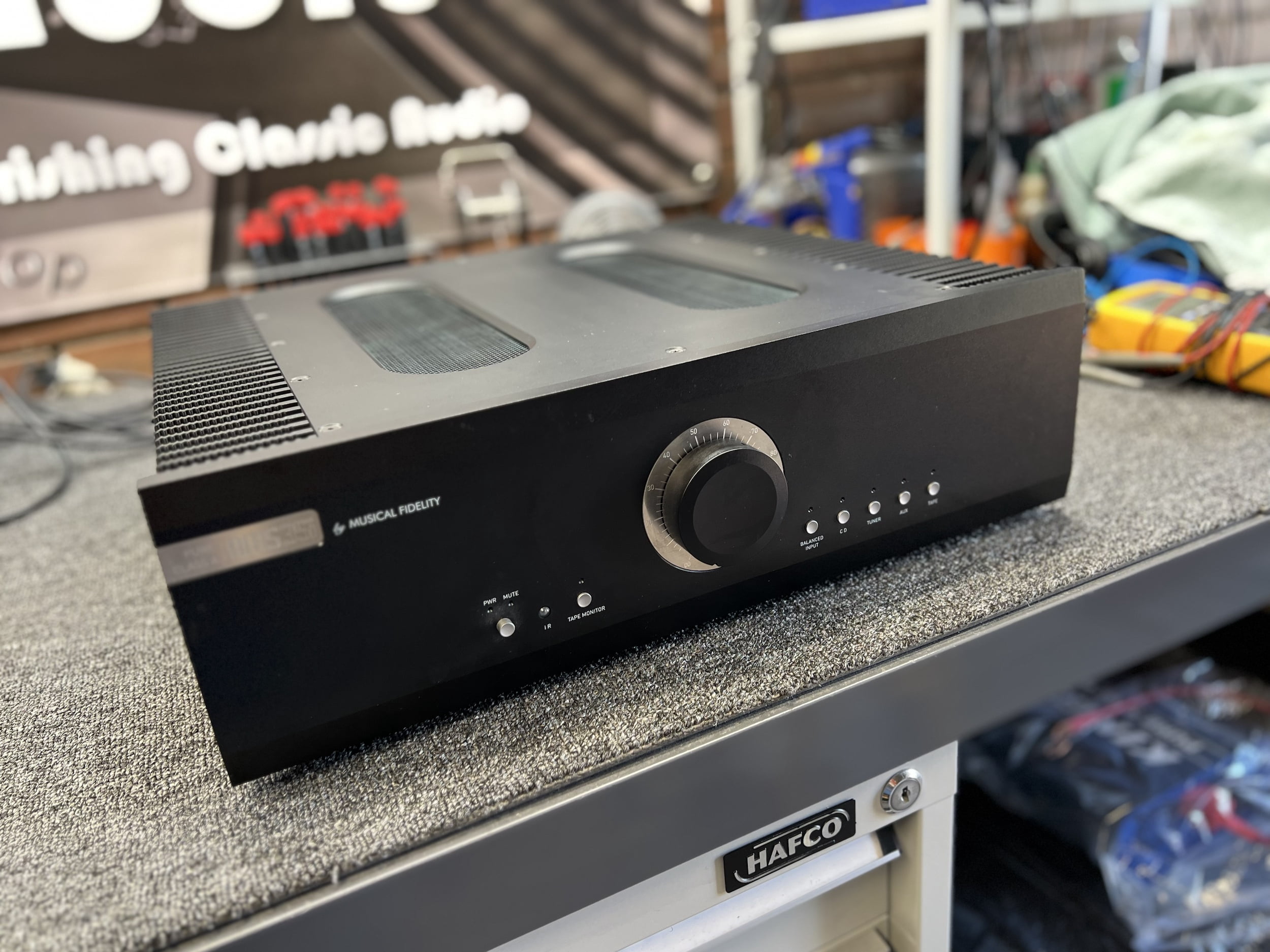
As always folks, thank you for stopping by and sincerely hope you enjoyed this one. If You’d like me to give your Musical Fidelity AMS35i a little TLC, or maybe take a look at your AMS50 or AMS100, don’t hesitate to let me know. They can be improved, that I can assure you. I work on most MF gear, and I’m always happy to do so.
Footnote
Many people visit to grab information, but there’s a contingent of folks who appreciate a few of the details about the repairs themselves and what goes into creating articles like this. To those people especially, customers, people who use our advisory service, and people who take the time to comment, share or offer feedback, I say thank you, you legends!
I’ve finally joined the dark side and listed my business on Google. If you enjoy the site, if articles have helped you, or if are a customer and have been pleased with the work we’ve done for you, you are most welcome to leave a review on my new Google business listing. We’ve had some crackers so far and every positive review helps!
Thanks and I’ll see you again soon.
Discover more from LiQUiD AUDiO
Subscribe to get the latest posts sent to your email.

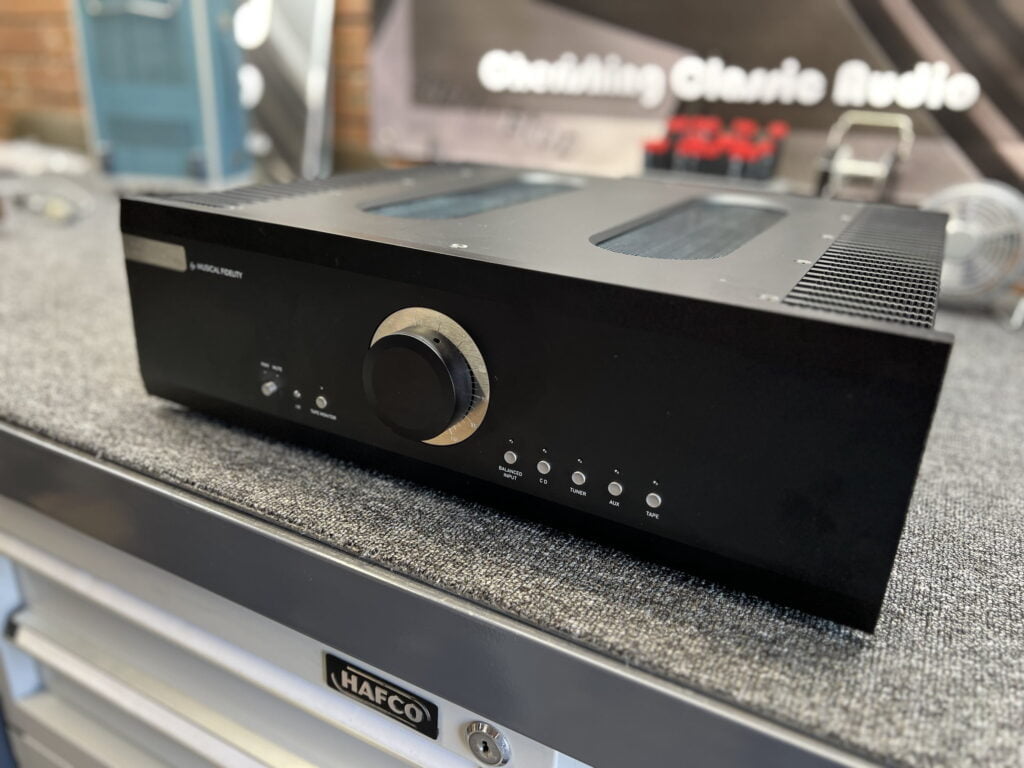

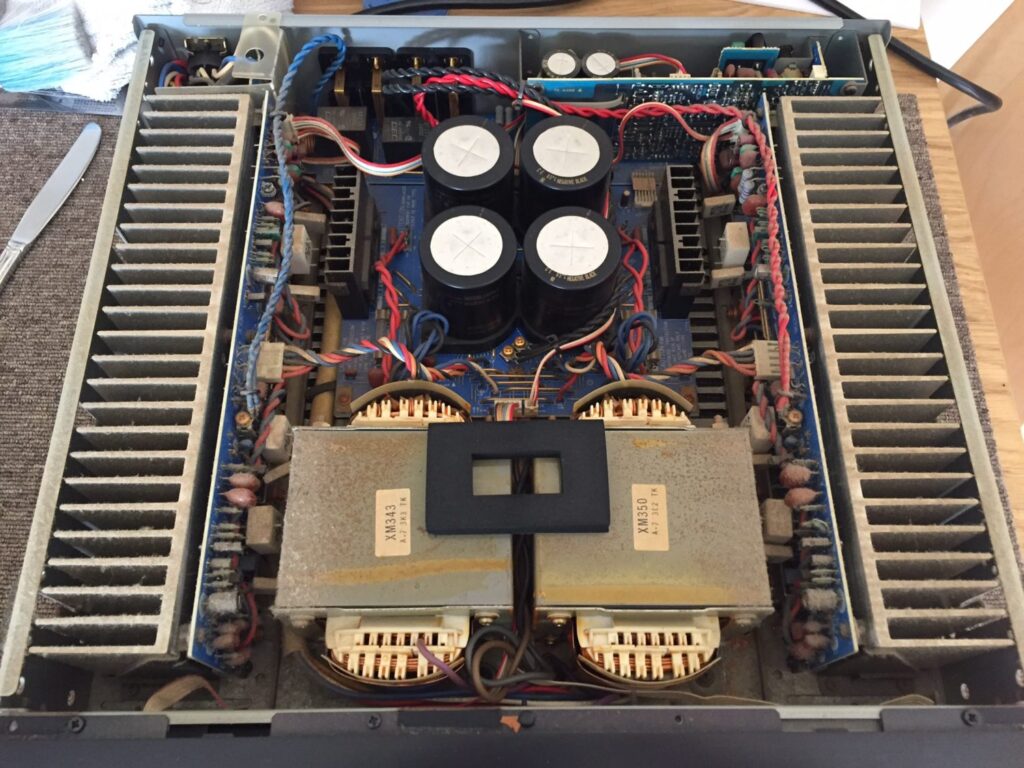
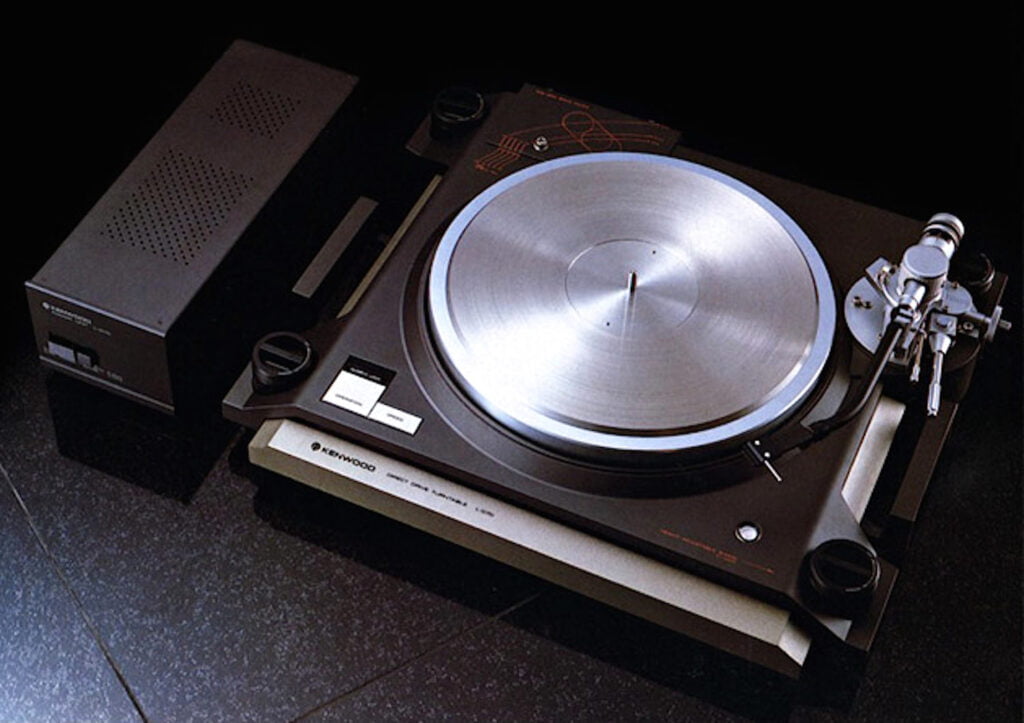
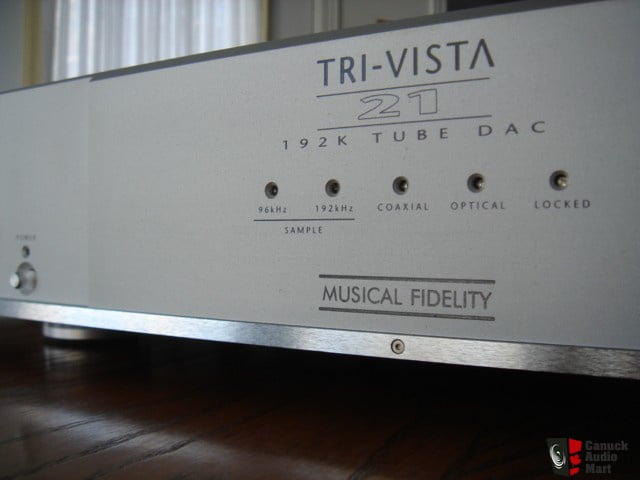
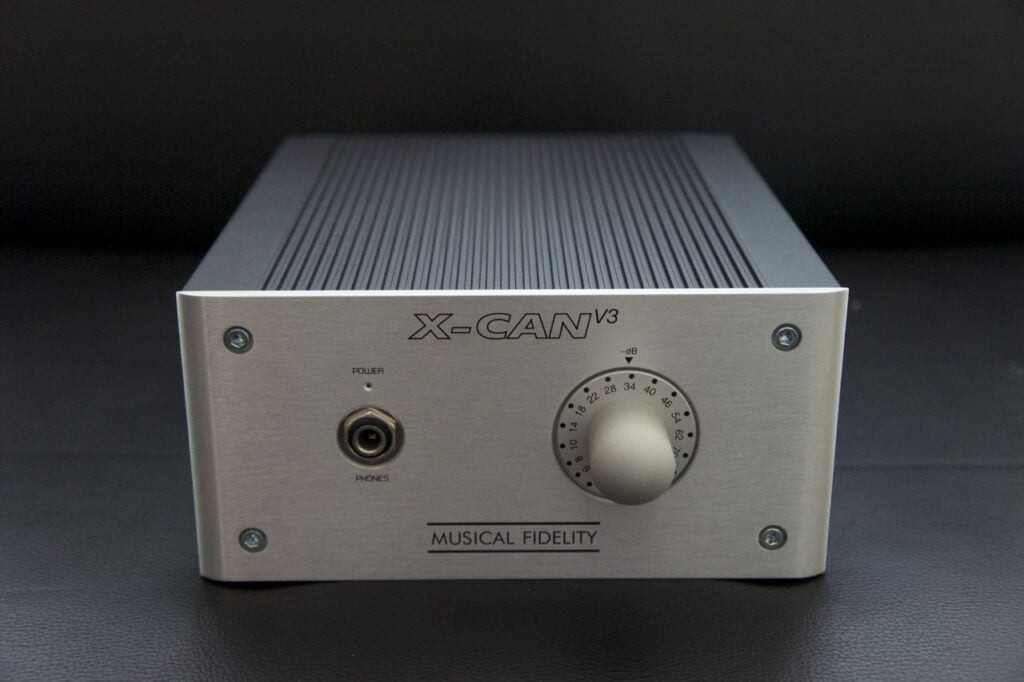

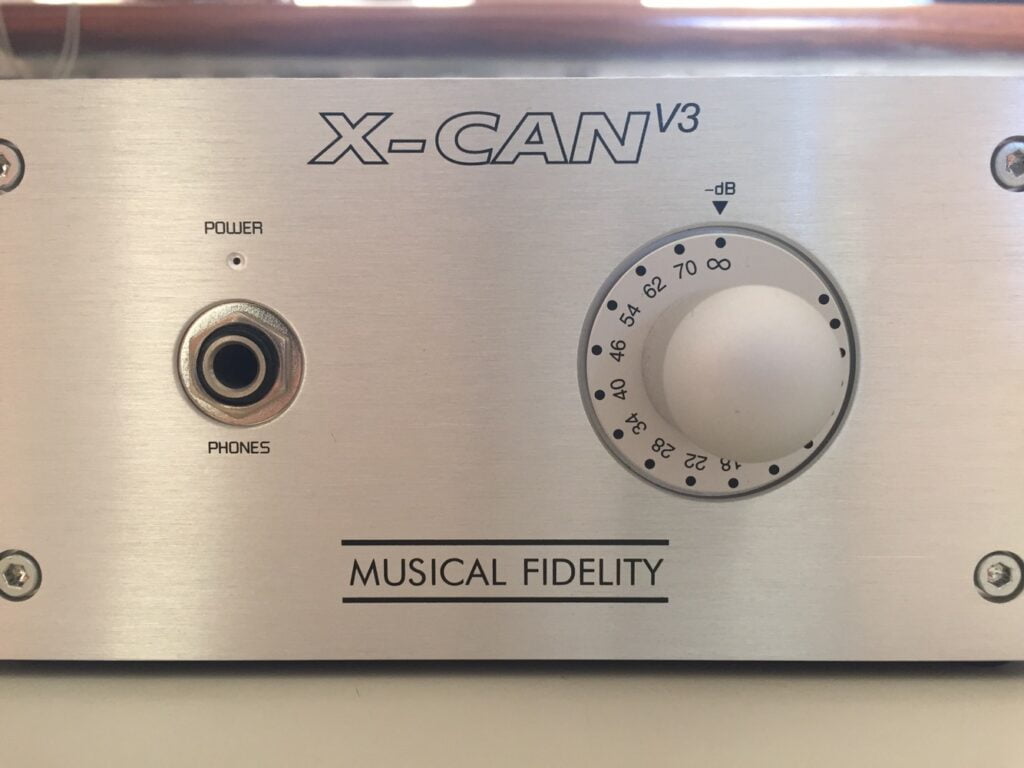
Hello Mike
Another great article. I really enjoy your candour.
I have always found Musical Fidelity to be heavily overrated equipment. It is very British – i.e., cheaply built, cheap parts and Rolls Royce price. Still your work on it would have improved it immensely and would have brought a standard of quality that Antony Michaelson could never have achieved.
Best regards
Marius
Thank you Marius, glad you enjoyed this one. I definitely hear what you are saying, though I am quite fond of MF, despite the parts quality issues. I hope to get hold of this one again, or another from the series, and implement a lot more of the improvements I’d really like to make.
They are not cheeply build, that is simpley not rigtht they are build like a tank, maybe you Think that the capacitors is shit, byt why does Kondo in Japan use them if the are so bad ?????i don’t like just to Dissing a produkt just because you can…..you are not right, Look inside a Macintosh and se the components they are cheap but cost much more than musical fidelity…..Things are realative!
Hi Thomas and thank you for your comment. Nobody disputes MF’s chassis quality, Marius was simply stating what many of us know well and that is that compared to other equipment at the price point and based on any informed and impartial assessment, MF equipment exhibits some cheaper design and build elements. Jamicon caps held on with cable ties for example are not acceptable in a $10k AUD amplifier and are not used in any Kondo equipment I’ve ever seen. This is a statement of fact, in my case, based on a direct assessment of this amplifier and informed by experience working on thousands of pieces of hi-fi gear, including many MF pieces. Remember, this is only hi-fi equipment, rather than getting upset, be thankful that there are independent sources speaking the truth without fear or favour, a rare thing these days!
I almost bought a Musical Fidelity.
They do indeed sound wonderful.
I needed a temporary integrated amp to see me through until my Krell gets fixed and auditioned Cyrus, Musical Fidelity and Rega. I chose the Rega Elex-R because sound suited my taste and the price suited my budget (also has pre-out so I can use it with my Krell power amp until I find a better pre amp).
I wonder if Rega use better parts in their entry level products than Musical Fidelity ?
Hi Ralf, they are all pretty ordinary at this level unfortunately and even way above. Compared to the build of your Krell amp, the stuff you’ve mentioned doesn’t even compare. I’m not a fan of Rega electronics at all from a design and build standpoint, but if it sounds good to you, that’s certainly a good thing.
Hi Mike.
Always find your MF article enlightening. Can’t seem to let MF gear go, I have an A370 mk1 with it’s MX pre, and MC6 towers in the loft (installed a hoist to get them up there). The latching relay in the mains switch failed which I used as an excuse to buy an A5 amp, which blow a channel (also in the loft) replaced with an M6i. I use a M1SDAC/ X-AS100/kef bookshelf as office gear, other X series bits in the workshop.
One of the problems with HiFi in this price range are the overheads and middlemen, dealers have to make a living on a relatively small turnover, as does the manufacturer, the tax man likes to take money and waste it, workers want a wage and if you have ever had to advertise full page adds in glossy mags you will know it has to be up at the top of the bills. Not a lot left for components, biggest single item must be the case then the transformer, which in a lot of cases seems to be borderline in terms of stiffness. Texas Instruments produced a very good paper on power supply design (article AN-1849) which I try to use as my benchmark for upgrading or replacing a PS, but the article makes it very plain the design whilst being of high quality is not commercially viable, this is what we as end-users have to contend with.
It’s a good thing the world has people like yourself to overcome some of these short coming for customers and pass knowledge to others.
Many thanks Mike, your articles are much appreciated by myself and I suspect many others, keep ’em coming. Nigel
Hi Nigel, Happy New Year and thank you for commenting. I agree, compromises (or reducing them) are the main reason I promote proper high-end gear, vs. the pseudo high-end gear so commonly available in retail outlets and aimed at buyers who really don’t know any better. The compromises needed to bring gear like this to market and make it affordable and profitable for retailers and distributors are markedly reduced on pieces like my Accuphase C-280V and DP-90 for example. All the MF gear I’ve owned or worked on has been charming or cute in its own way, performed decently, but been compromised in terms of design, parts and build. Power supply design is critical and one of the most expensive parts of any piece of gear, so we inevitably see corner-cutting in all but the very best gear. Some MF pieces are better than others, I still love the classic TriVista 21 Class-A tube DAC for example, but even this is lacking in terms of parts quality, until improved. Here’s to TI, Analog Devices, National Semiconductor etc for their wonderful engineering papers. I love reading these classic articles and application notes and many of the great hi-fi designs are taken right from these legacy application notes as I’m sure you are aware!
Bonjour, j’ai mon musical fidelity AMS 35i qui est en panne: fusibles grillés et surement des condensateurs HS je voulais en profiter pour changer tous les condensateurs mais je ne sais pas quoi prendre. J’aimerai savoir si vous pouvez me donner un conseil concernant le choix des condensateurs de remplacement en vous remerciant.
English: Hello, I have my musical fidelity AMS 35i which is broken: blown fuses and probably HS capacitors. I wanted to take the opportunity to change all the capacitors but I don’t know what to do. I would like to know if you can give me some advice regarding the choice of replacement capacitors, thank you
Hi Mike and thanks for visiting. I offer an advisory service, accessible from my contact page, for general assistance in terms of selecting parts for example. That said, I don’t provide parts lists or detailed technical advice and we have a language barrier here, too. My best advice where equipment is broken and needs what will likely be a technical repair, is to take it to a technician who specialises in such work.
I have an AMS 100 in Sydney ..I’d love to know how you think I can improve it…
Hi Anthony, thanks for your question. There are many ways the models in this series can be improved, in keeping with all MF gear, and mostly relating to parts quality, construction and execution. The key is finding the right person to do the work for you, no small undertaking with something of this scale!